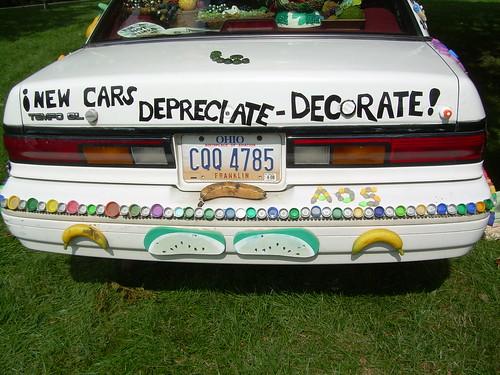In a perfect world, a buyer would be able to sell their vehicle for the same amount as the purchase price. However, numerous factors make this an impossible practice.
Unlike a fine wine, an automobile does not grow sweeter with age.
In order to be a well-informed driver, it is important to understand the common ways in which the value of a car decreases.
1) Accidents
A car will immediately depreciate in value once it has been involved in an accident. Whether it is a fender bender or a head-on collision, an accident will certainly affect the overall price.
For instance, when buying a used car, many potential buyers will check the vehicle history report. If the report indicates that the car has been in an accident, a majority of people will not even consider it as an option.
Buyers want to see that the car is in proper working order. Although the accident-related damages may have been fully rectified, feelings of doubt or anxiety may continue to linger.
2) Poor Condition
Paint chips, gouges, or fading can all decrease the value of your vehicle. The good news is that these are easy fixes that can be accomplished with a minimal amount of money.
Investing in a quality paint job is the best way to spruce up your vehicle and make it look its best.
In addition, a thorough cleaning of the car’s interior is helpful. Many buyers want to see a well-maintained cabin that is free of any obvious blemishes. Repairing holes or tears in the upholstery of the seat is an important step.
Finding ways to make the automobile look as presentable as possible is a great way to combat a depreciating price.
3) Old Car Model
If your vehicle is older and has racked up a large amount of miles, the value will be negatively affected. The simple truth is that the more the car is driven, the less money it will be worth.
Ideally, buyers like to see a car that is only a few years old and has a low odometer reading. However, this is a difficult combination to achieve.
Many drivers need to use their car for a variety of different purposes and cannot avoid a hefty amount of miles. If this is the case, do not panic. The good news is that every individual is in the same position.
4) Car Color
It may seem hard to believe, but the color of a car can negatively impact its value. For example, a dark color such as black or navy in a warm climate state such as New Mexico is typically undesirable.
Similarly, a custom color such as bright yellow or lime green may be hard to sell. Only a select group of people will be attracted to this type of unique feature.
Therefore, a decrease in demand will ultimately lead to a lower resale value.


Hi,
ReplyDeleteThanks to share this great informative article. I have found many good things in this article and no doubt I have become a big fan of your blog. Really I will like if you continue this work.
Have a nice day...!!
Georgia Auto Title Loans